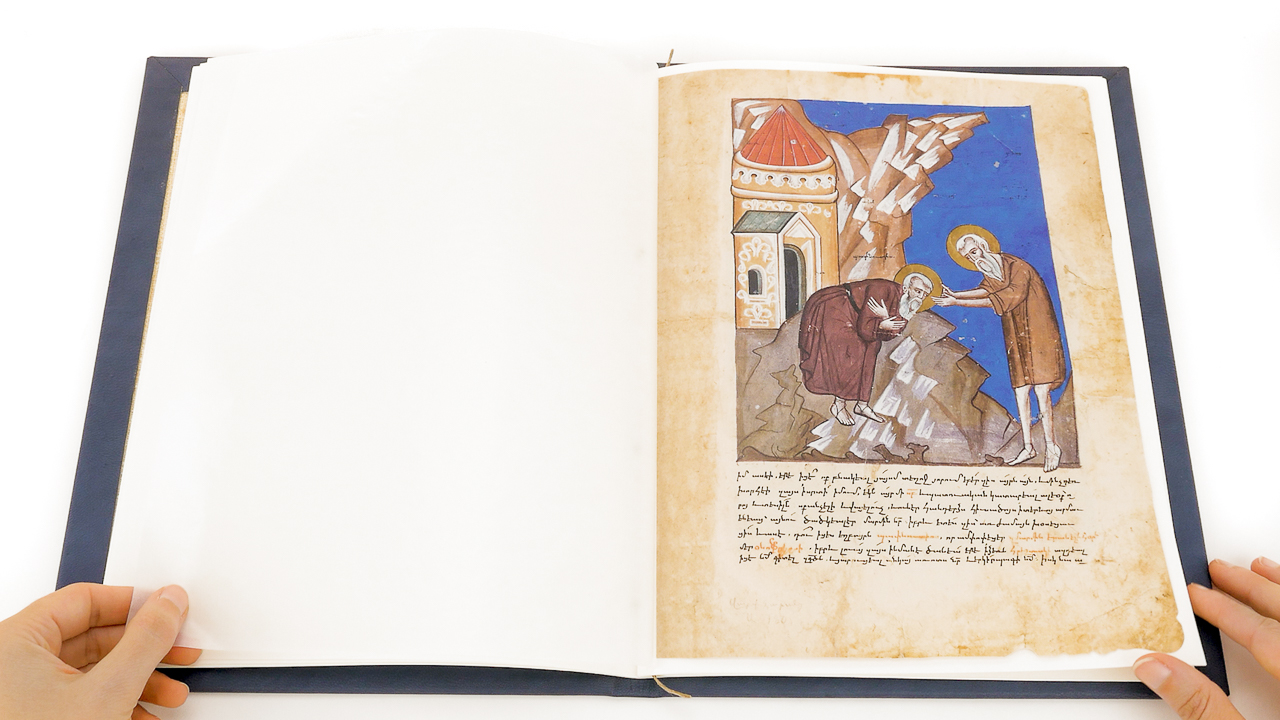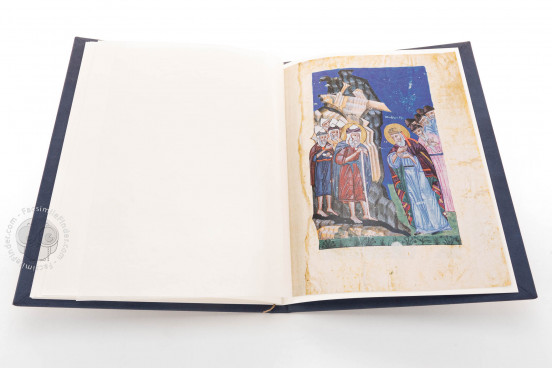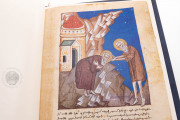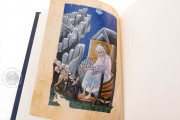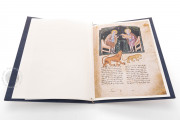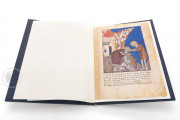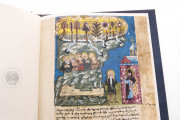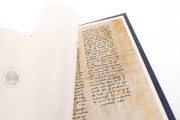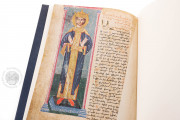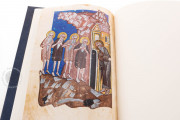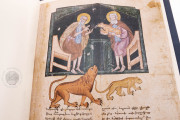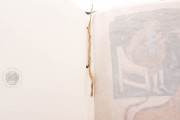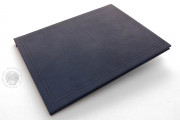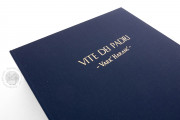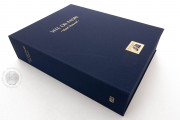The Fragmentary Codex Vark' Haranc' (Lives of the Fathers) is one of the most precious and rarest manuscripts in the library of the Armenian monastery of San Lazzaro in Venice. In its present form, it comprises five paper leaves that once belonged to a now-lost larger manuscript. This was probably copied in Ottoman Armenia (in eastern modern Turkey) in the sixteenth century. The fragment is a manifestation of the Armenian tradition of the Vark' Haranc' (Lives of the Fathers), a collection of biographies of early Christian hermits referred to as the "desert fathers." It features eight beautiful miniatures, three occupying a full page, displaying a rich color palette.
Thanks to the vividness of the colors and the quality of the execution, the miniatures stand out as examples of Armenian illumination of the sixteenth century. They illustrate characters and events described in the accompanying text, and all of them recall the miniatures in MS 285 of the library of the monastery of Saint James in Jerusalem, the most illustrious illuminated copy of the text.
Few but Valuable Illuminations
The five leaves today in Venice could be the surviving fragments of the now lost Vark' Haranc' manuscript known to have been copied by Yovhannēs, son of Čenupēk, in Amida (present-day Diyarbekir) in 1593, using the Jerusalem manuscript as a model.
The miniatures are painted in bright, vivid colors, dominated by ultramarine blue, sage green, orange, and different shades of brown. Gold is used in the depiction of the halos and also to convey an idea of a heavenly atmosphere (fol. 4r) and for the crown and the embroidered robe of the anonymous "Byzantine" prince (fol. 1v). Despite their static poses, there is a certain expressiveness in the facial features of the depicted characters, conveying feelings of serenity or emotional participation.
A Model for Christian Monasticism
The text of the Venice fragment is an example of a collection of biographies and sayings of the desert fathers, early Christian hermits and ascetics whose exemplary lives and wisdom had a major influence on the development of Christian monasticism in the East and the West.
The text, in one or two columns, is written in Notrgir, the post-medieval Armenian script that developed from the earlier Bolorgir script. The text is in black ink, with titles in red and initials in gold. Some sacred terms and the names of saints are also in red, while the names of the persons of the Trinity are in gold. At the beginnings of major textual sections on fol. 1v and fol. 4v are enlarged initials, both in gold.
A Long Journey from Armenia to Venice
The five leaves constituting the Fragmentary Codex Vark' Haranc' were brought to the island of San Lazzaro in the Venetian lagoon by the Mekhitarist father Nerses Sargisean (1800-1866) on his return from a journey to Armenia in 1846-1852. It was a common practice in the Mekhitarist tradition to undertake journeys to the East to collect precious manuscripts. These often served the monks as exemplars for print editions of historical Armenian texts. The five folios, however, include only brief portions of text and were probably acquired for the beauty of their miniatures.
We have 1 facsimile edition of the manuscript "Fragmentary Codex Vark' Haranc' (Lives of the Fathers)": Vite dei Padri facsimile edition, published by Nova Charta, 2021
Request Info / Price
